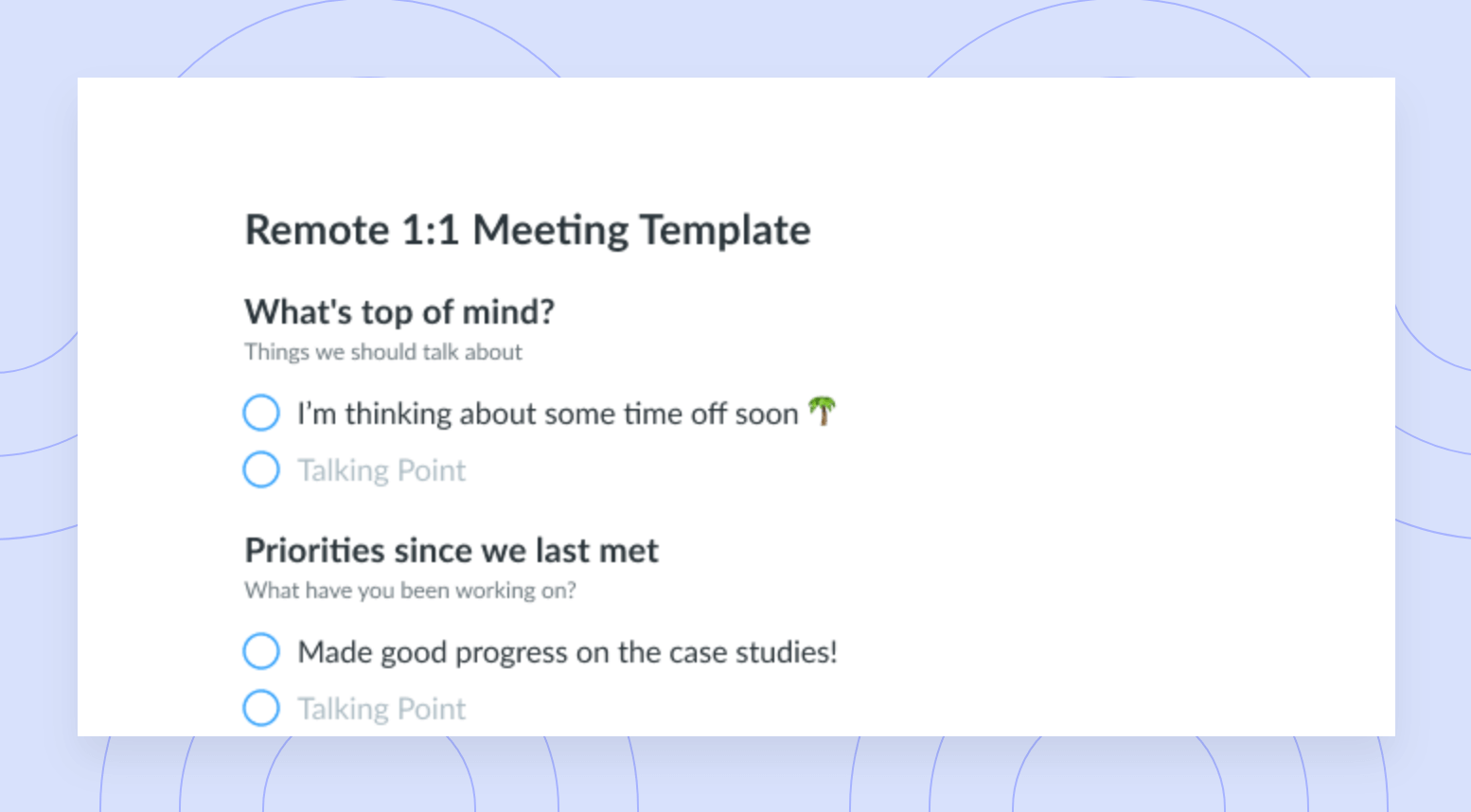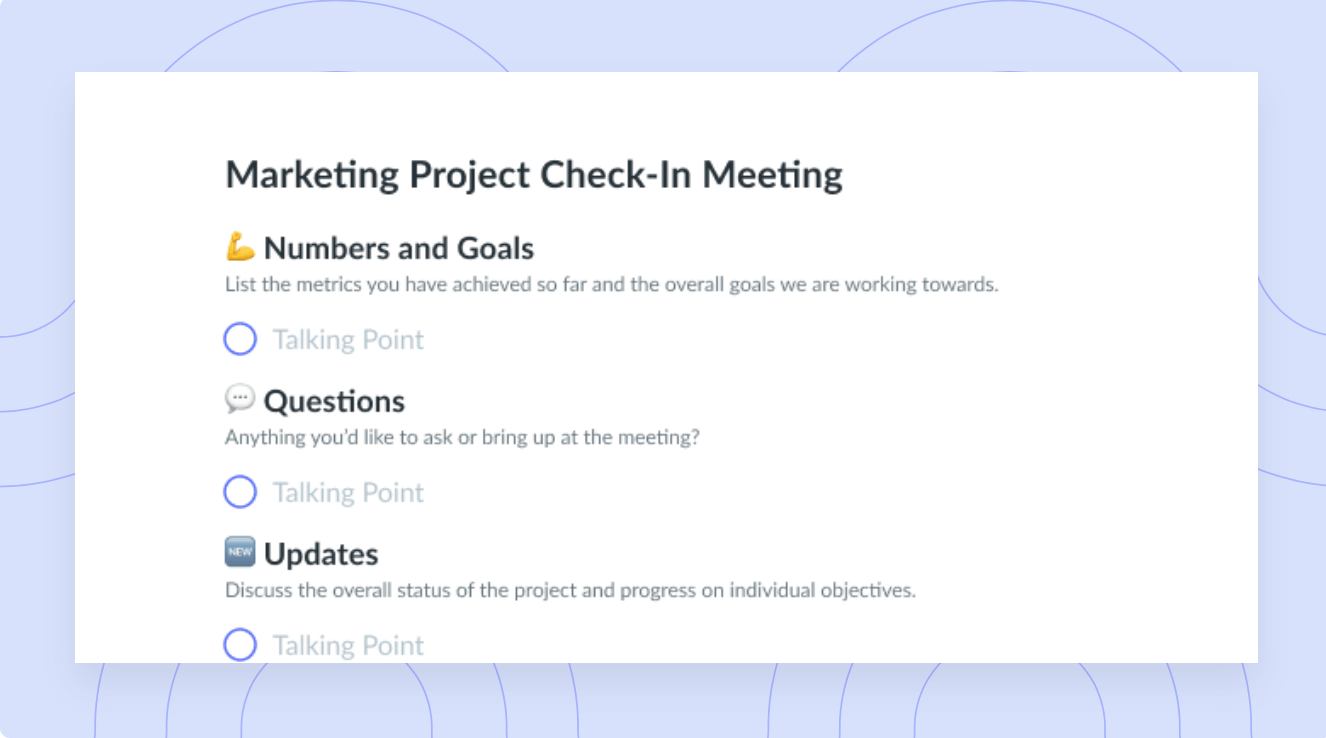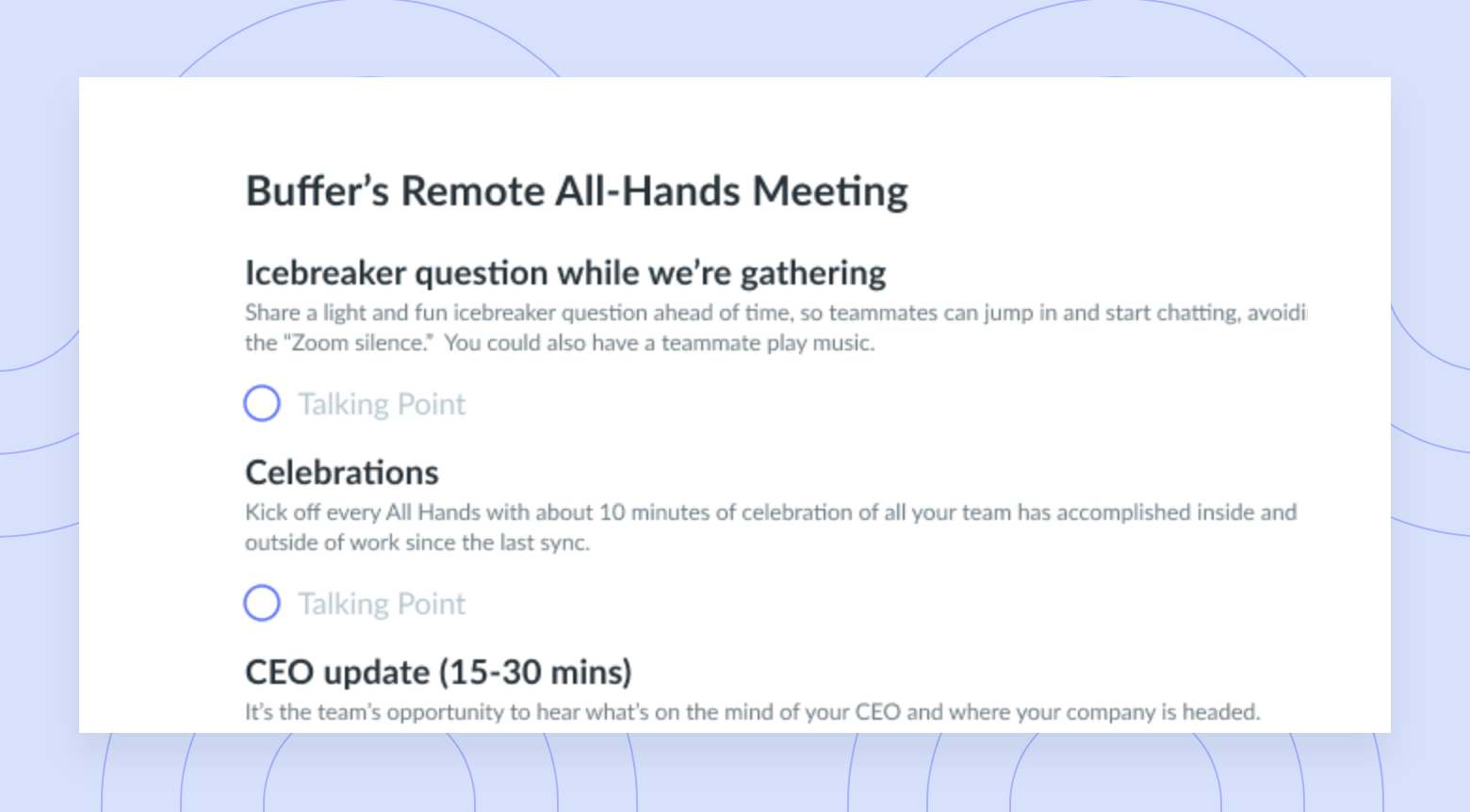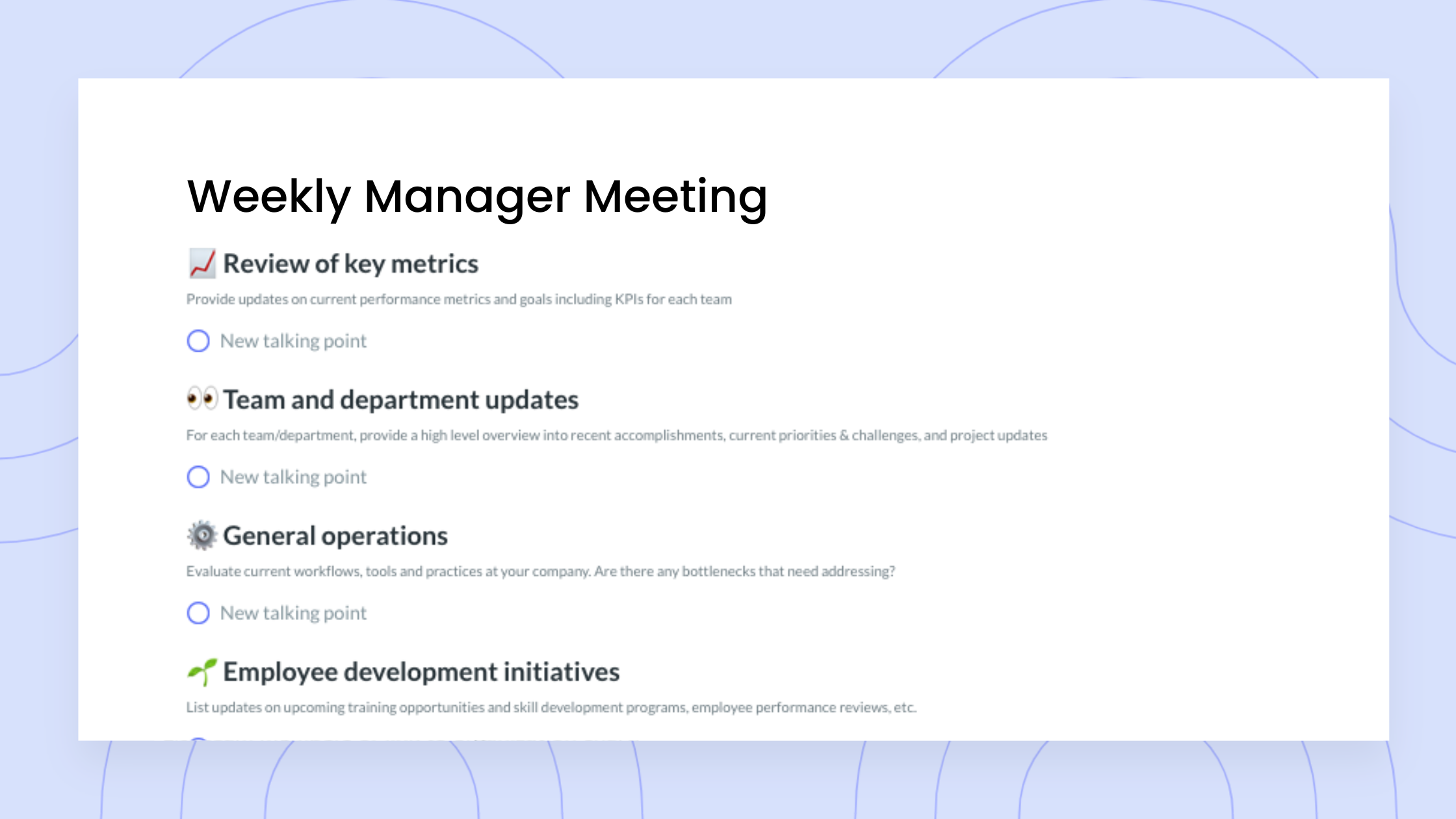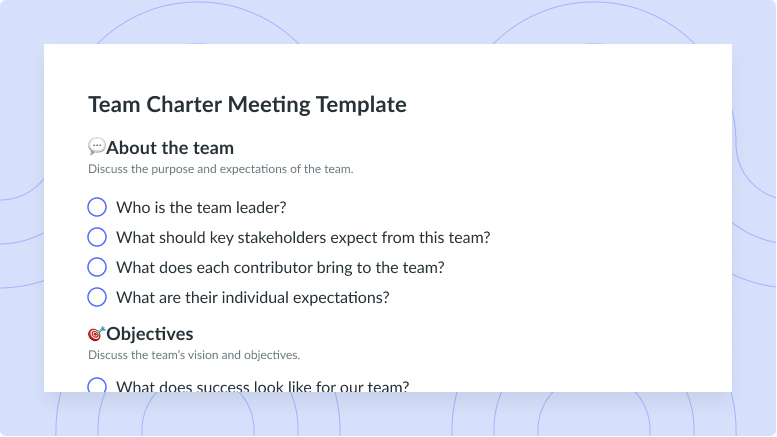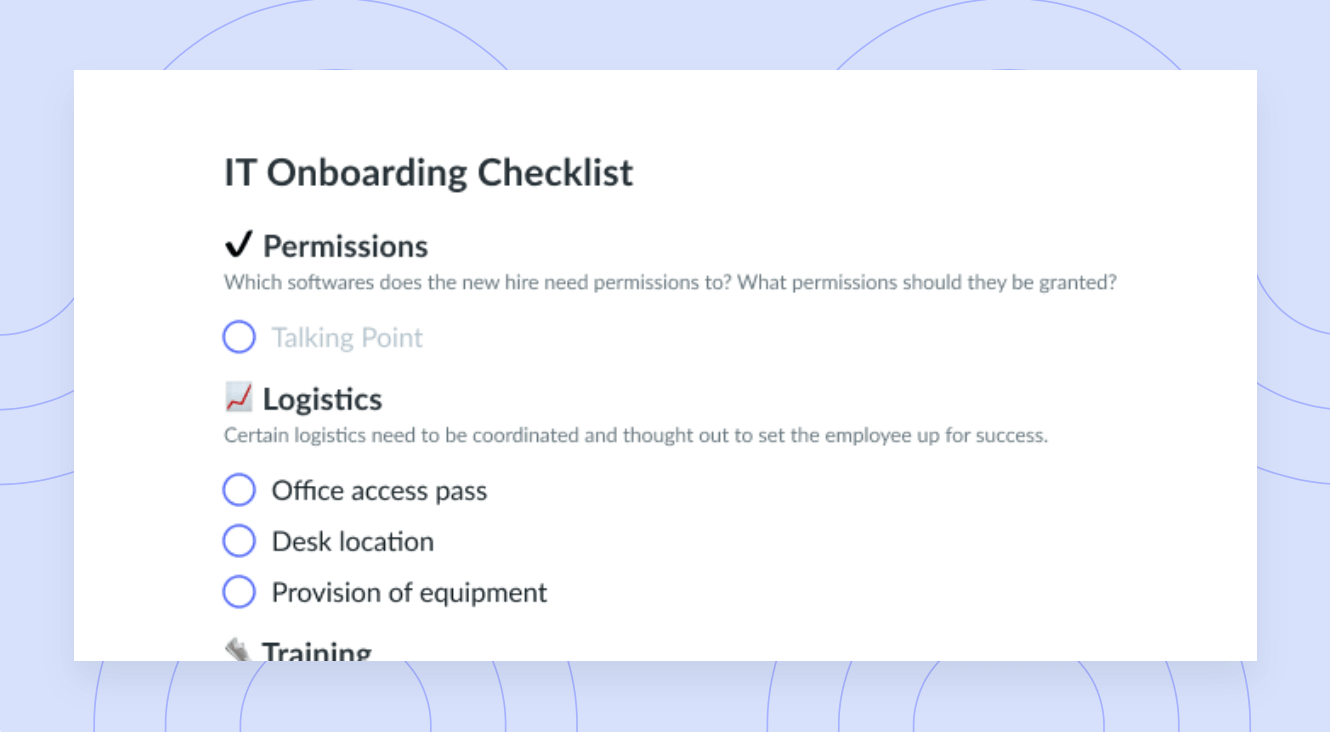Remote Work Policies: 10 Best Practices To Inspire Your Own
Uncover remote work policies from the top remote companies to make room for collaboration and execution.
As companies worldwide embrace remote work, it’s crucial for leaders to establish transparent guidelines for communication, decision-making, and collaboration within their teams. Crafting a remote work policy offers an efficient means to achieve this objective.
What is a remote work policy?
A remote work policy describes specific guidelines that employees should follow when working from locations other than the office. Remote work policies outline when employees are expected to work, how communication between teams will take place, and which meetings or company rituals remote employees are encouraged to attend.
Here are six topics you should cover in your remote work policy:
- Eligibility: what positions are eligible to work remotely?
- Availability: are employees expected to work between a specified time?
- Productivity: how is productivity going to be measured?
- Communication: how are teams expected to make and record decisions?
- Security: what security measures should be taken when working remotely?
- Equipment: does the company provide home office equipment for remote employees?
A “remote work policy” document is needed so that everyone in the company can read and access it when needed. Software like Fellow, the all-in-one meeting AI management software, can assist in structuring and implementing policies you define.

Make remote work more productive
Implement meeting best practices at scales with integrated meeting policies into every Google or Outlook Calendar event using Fellow’s Meeting Guidelines feature.
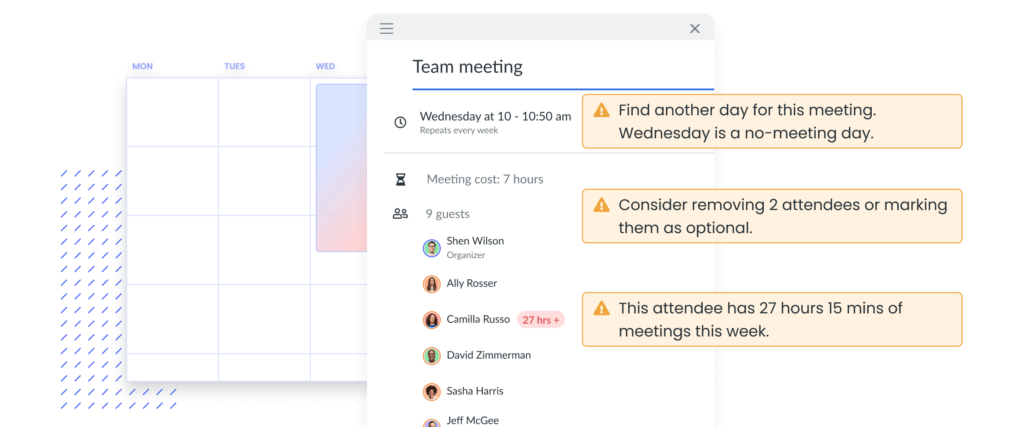
Crafting a remote work policy
Remote work has become increasingly prevalent, and it’s crucial to have a well-defined strategy in place to ensure productivity, communication, and employee satisfaction. Here’s a comprehensive guide on the steps needed to create a robust remote work policy:
Determine employee eligibility
Begin by defining which roles and employees are eligible for remote work. Are there certain departments or roles that are required to work in-office? Consider job functions, performance metrics, and the nature of tasks that can be effectively executed outside the traditional office environment.
Define work locations and schedules
Clearly outline where remote employees are permitted to work and establish clear guidelines regarding work schedules. It helps to determine if employees have the flexibility to choose their own work hours or if there are specific core hours for collaboration and in which timezone it will follow.
Establish communication protocols
Communication is the cornerstone of successful remote work. Define preferred communication channels and tools, response times, and expectations for both synchronous and asynchronous communication to ensure seamless collaboration among remote teams.
Set productivity expectations
Define clear performance metrics and expectations for remote employees. Establish goals, deadlines, and key performance indicators to measure productivity and ensure accountability in a remote work setup. Managers play a crucial role in translating organizational goals into actionable tasks and performance expectations for their remote teams. However, they should collaborate with any relevant stakeholders.
Fellow can help define clear performance metrics and expectations for remote employees, establishing goals, deadlines, and key performance indicators (KPIs) directly within the platform. Fellow provides a centralized platform for goal-setting, performance tracking, and comprehensive meeting note management. This fosters seamless collaboration, guaranteeing alignment with organizational objectives and fostering accountability across remote teams.
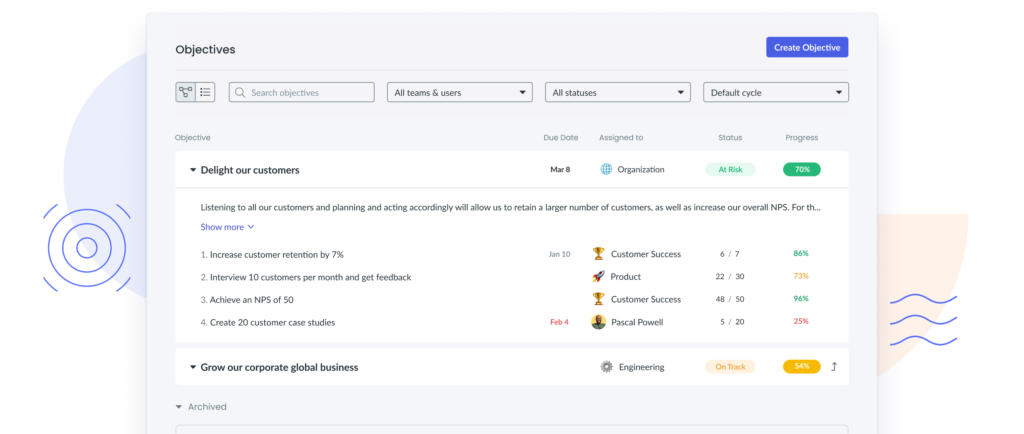
Review technology requirements
Assess the technology requirements of remote work and provide employees with the necessary equipment, remote software, and technical support to perform their tasks efficiently and securely from remote locations. A collaborative approach involving IT departments, procurement teams, and senior leadership is essential in assessing technology requirements, procuring necessary resources, and allocating budgetary resources to support remote work effectively.
Set reimbursement guidelines
Outline policies for reimbursing employees for expenses related to remote work, such as internet connectivity, home office equipment, and utilities. Ensure fairness and transparency in the reimbursement process so everyone knows what can be reimbursed, where to file it, and when to expect it. Overall, collaboration between HR departments, finance teams, and senior leadership is essential in developing clear policies for reimbursing employees for expenses related to remote work.
Develop attendance and leave policies
Define guidelines for tracking attendance, logging work hours, and requesting time off in a remote work environment. In a remote work setup, traditional methods of tracking attendance, such as physical presence in an office, are no longer applicable. Instead, organizations can utilize digital software to monitor employee availability and track work hours if they find it necessary. One of the many advantages of remote work is the flexibility it offers in terms of scheduling. Employees may have varying preferences for when they prefer to work, depending on their personal circumstances and peak productivity hours. Organizations can establish guidelines that allow for flexible scheduling while ensuring coverage during core business hours for collaboration and meetings.
10 remote-first companies (With remote work policies)
In order to help you with this process, we compiled a list of 10 remote-first companies and some of the remote work policies that have helped them be successful in their operational efficacy!
- GitLab’s Handbook-First Approach
- Automattic’s Use of P2 and Designated Mentors
- Buffer’s 10 Slack Agreements
- Webflow’s Track/Off-track Mechanism
- Zapier’s Lightning Talks and One-on-One Meetings
- Glitch’s Coffee Time and Remote-First Meetings
- InVision’s Official Office Hours
- Github’s Sync and Async Approach
- 1Password’s Security Considerations
- Toptal’s Weekly Recap Emails
1 GitLab’s handbook-first approach
GitLab is the world’s largest all-remote company, with over 1500 employees across 65 countries. The GitLab team handbook is the central repository for how they run a fully remote team.
“We document everything: in the handbook, in meeting notes, in issues,” says the GitLab Values page. “It is far more efficient to read a document at your convenience than to have to ask and explain.”
If there’s one thing you can learn from GitLab’s remote work policy, is that every decision should be documented. GitLab requires employees to adopt a “handbook-first approach” for company communication, and has made the use of meeting agendas and meeting notes mandatory for everyone in the company.
2 Automattic’s use of P2 and designated mentors
Automattic is a remote company with more than 700 employees spread across 93 countries. According to the CEO, Matt Mullenweg, the “Automattic creed” states that communication is the oxygen for a distributed company.
In a similar way to GitLab, Automattic has a centralized repository for company updates and decisions. They use a WordPress blog theme called P2 for internal communication and collaboration, and encourage employees to use this “blog” instead of using email communication inside the company. They are strong believers in Open Source, and aim to open source everything they can. Automattic’s remote work policy also states that every new employee should be assigned a mentor in the same time zone.
3 Buffer’s 10 Slack agreements
Buffer, a remote-first software company spanning 50 cities, prioritizes synchronous communication through tools like Slack. To manage notification overwhelm, Buffer introduced the “10 Slack Agreements,” outlined by Hailley Griffis, Buffer’s Head of PR. These agreements promote public channel use for non-private updates, status changes for availability indication, thread utilization for organized conversation, “do not disturb” mode activation when offline, and reserve @channel for emergencies only. These guidelines are beneficial for remote work policies.
4 Webflow’s track/off-track mechanism
Even though Webflow’s headquarters are located in San Francisco, 70% of their team works remotely. When asked about the company’s philosophy around logging work hours, Vlad Magdalin, the co-founder and CEO, said:
“We have a super-lightweight on-track/off-track mechanism that’s mostly a communication medium to help our product teams with timelines. And when you’re off track, there’s a mechanism for getting back on track.”
Webflow’s remote work policy states that they should use the RDA model – rework, defer, abandon – if they ever feel stuck on a project:
- Rework: “Can we add resources to the project or change the scope of the deliverable to meet the deadline?”
- Defer: “If the scope cannot be reduced, and adding resources is not an option, the next best option is to push the deadline out.”
- Abandon: “Consider this if you discover the deliverable will negatively impact the company.”
5 Zapier’s lightning talks and one-on-one meetings
Zapier is a 100% distributed company with over 300 employees in 28 countries. According to Wade Foster (the co-founder and CEO), there are three important ingredients to making remote work successful: team, tools, and process.
One thing you can take away from Zapier’s remote work policy is that the company encourages employees to join a weekly call where they can learn about what other teams are doing:
“Every Thursday morning or afternoon (rotating every week to accommodate people in different time zones), we get together for lightning talks, demos, and/or interviews. With over 300 people in seven major departments and even more smaller teams, it’s hard to see everyone on a weekly basis.”
Apart from these weekly hangouts, the company asks managers to set up recurring one-on-one meetings with their direct reports. It’s a great way to ensure that leaders are building trust and exchanging feedback with their distributed teammates.
6 Glitch’s coffee time and remote-first meetings
Glitch’s headquarters are located in New York. However, remote work is so important to the company that their Employee Handbook contains a specific section on distributed work. As part of their remote work policy, Glitch asks employees to communicate their work hours with their manager and be available during that time frame. On the other hand, there are two innovative activities that have helped Glitch develop a strong work culture: coffee times and remote-first meetings.
Coffeetime: Each week, employees receive an email pairing them up with another person in the company. They are encouraged to grab a beverage and chat whenever it’s convenient for both parties. It’s an opportunity to socialize and get to know people in different departments.
Remote-first meetings: Every meeting is conducted over Zoom, even if some attendees are in the NYC office. If there’s someone calling into the meeting, Glitch employees are required to join from their own office or private booth so the experience is identical for all attendees.
7 InVision’s official office hours
InVision’s employees work from all corners of the world, including Australia, Israel, England, Argentina, Nigeria, and New York – where their headquarters are located. One interesting thing about this company is that, despite the difference in time zones, their remote work policy states that official working hours take place between 10 am and 6 pm ET.
However, this doesn’t mean that employees get less flexibility. According to Mark Frein, InVision’s Chief People Officer, people are encouraged to prove themselves through the quality of their work, and not through the number of hours that they spend in front of a desk:
“It’s about results, not where your IP address is,” says Frein. “We care about what you’re able to do or achieve. If you’re able to achieve something great while working wonky hours, then that’s great.”
8 1Password’s security considerations
1Password has been an almost entirely remote company for 14 years. Apart from asking employees to over-communicate, their remote work policy also states that every worker needs to know exactly what to do to remain safe online while working from home.
When people work from home, it inevitably brings new security considerations. These are some of the security guidelines that 1Password shares with their distributed employees:
- Work should only be done on trusted devices (no working from public computers or a friend’s computer).
- Employees shouldn’t store customer/sensitive information on local devices.
- Home routers should not use default passwords.
9 GitHub’s sync and async approach
GitHub is a US-based organization where ~80% of the tech team is fully distributed.
As a remote-first company, they emphasize the importance of communicating effectively and empathizing with other people in the company. That’s why their remote work culture encourages employees to use synchronous and asynchronous collaboration throughout the day.
At GitHub, we use our internal repositories for announcements, updates, and decisions to help employees stay aligned. Oftentimes, simply restating what you’ve decided can save time in lieu of setting another meeting.
10 Toptal’s weekly recap emails
Last but not least, there’s Toptal, a company that has been fully remote from day one. According to Breanden Beneschott, the co-founder and COO, employees aren’t asked to log or record their work hours. However, there is one simple thing that the Toptal team does to keep everyone accountable for doing their work: they ask teams to send a weekly recap email.
“Accountability is very important across the company, and we hold each other to a high standard in this regard,” says Beneshott. “One way we do this is by having everyone send weekly recap emails of what they did in the past week, what they thought it would achieve, and what the results were.”
Creating a remote work policy
We hope that these 10 examples helped you understand what the world’s most successful remote companies are doing to keep their teams connected and engaged.
If you need a quick recap, these are our main ‘remote work policy’ takeaways:
- Document all your decisions in the form of team handbooks and meeting notes.
- Establish clear expectations around communication channels such as Slack.
- Leverage asynchronous communication methods.
- Share a list of security guidelines to protect sensitive information.
- Trust employees to do their work. Instead of tracking work hours, ask them to share important milestones at the end of the week.
By incorporating these elements, organizations can support productivity, collaboration, and employee well-being in remote work environments. With Fellow, organizations can streamline remote work processes, enhance communication and collaboration, and foster a culture of trust and productivity among remote teams.









